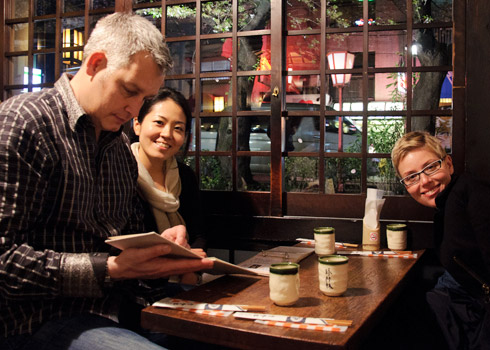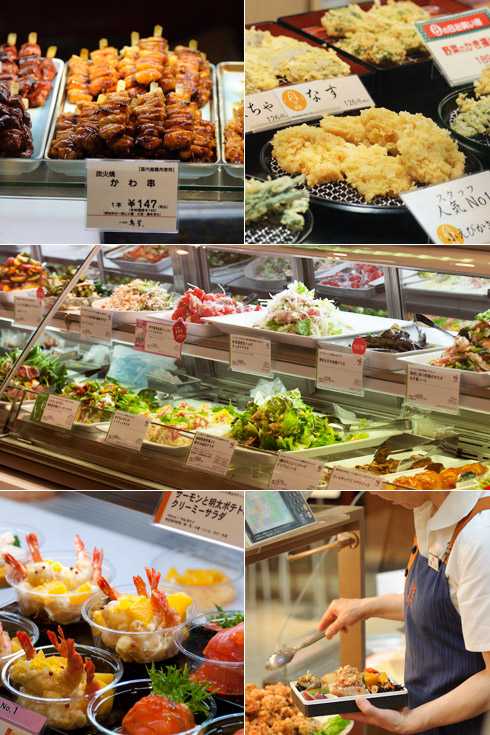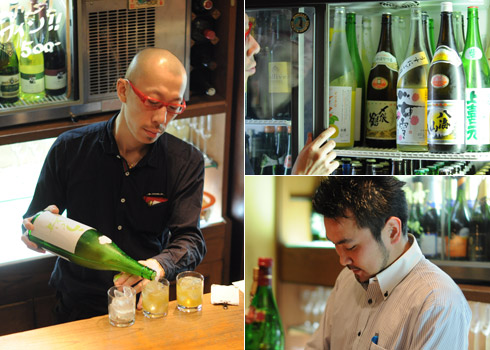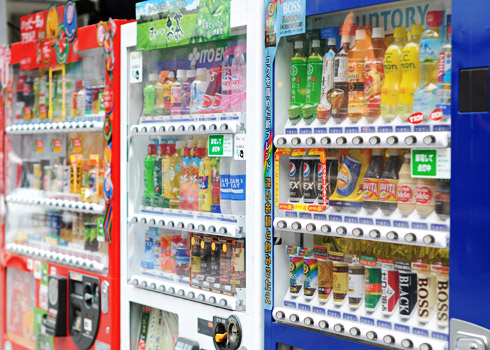Greg and I derive as much enjoyment from eating great dishes and appreciating their presentation as we do from observing fashion and style. Japanese food happens to be one of our favourites, so each carefully chosen meal in Japan was a joyous ritual, provoking much conversation. And picture taking.
There are five unique Japanese food and beverage experiences that stole our hearts and we thought we’d go completely off topic and share them with you today.
Specialized Restaurants
These typically small eateries, some seating no more than four people, specialize in only one type of food. For example, a yakitori-ya specializes in chicken on a stick that’s grilled on coals right in front of you when you’re seated at the bar. An unagi-ya specializes in grilled unagi (eel). And sushi restaurants serve little but sushi and sashimi. This is very different to most Japanese restaurants we’ve experienced outside of Japan, where you typically find yakitori, unagi and sushi all on the same menu.
Sushi is my favourite food and eating it in Japan was sublime. We ordered our favourites like hand rolls and tuna sashimi, and also tried a few new things under the supervision of our dear friends Tomoko and Brian.
Izakayas
These types of restaurants serve seasonal Japanese food on small and medium plates. What a tapas bar is to Spain, or a pub is to Britain, the Izakaya is to Japan. It is a place where you can grab a tasty snack while having a drink or two with friends or colleagues. The food types and price points at izakayas vary a great deal and we recognized very few items on the menus. But with Tomoko’s guidance we ate extremely well and had lots of utterly scrumptious food.
Our best Izakaya experience was a place alongside the canal in Kyoto, where we took Brian for his birthday dinner.
Department Store Food Halls
I grew up in Hong Kong, where Japanese department stores like Takashimaya, Diamaru, Sogo and Seibu, were very popular. So visiting them always brings back fond memories. I LOVE Japanese department stores, and one of the reasons is the large variety of the most exquisitely prepared gourmet “to go” food that they serve from counters as neat as a pin in their basement levels. People buy the delights to eat at lunch time, or take them home to have for supper. Tomoko told us that the food is discounted at 5pm each day, by which time most of it has already been sold.
We didn’t eat at a food hall on this trip, but we did go to Takashimaya and take photos of the wonderful dishes until one of the serving ladies starting scolding Greg.
Standing Bars
There are so many small, interesting bars in Japan. Some of them have the odd seat, but for the most part people stand at high counters and drink. They might order a small snack with their drink, but will stand while eating. The interiors are small, decorative and cozy, mixing up the modern with the traditional (a theme that runs throughout Japan). You’ll often see them full of men in suits straight after work. The interiors are festive and the alcohol itself becomes part of the decor. We found the huge bottles of schochu (a Japanese distilled spirit) particularly attractive. And the bartenders are pretty cool too.
Some of the guests moved to a particularly cosy bar after Brian and Tomoko’s wedding reception. This bar was also called a “one coin bar” because most of the drinks could be purchased with a single 500 Yen coin (about $6, which is very reasonable in Tokyo).
Vending Machines
Japan’s virtually vandalism-free society allows for a serious vending machine culture. They are all over the streets of Japan, like three or four around every street corner, and create a very colourful scene. They dispense both hot and cold drinks, snacks and cigarettes. The vending machine products are extremely affordable and come in very handy.
And despite taking every opportunity to consume large quantities of Japanese delights, both Greg and I returned from Japan having lost weight. It really does seem to be a healthy, balanced cuisine, as long as you eat the carbohydrates in the same proportion that the Japanese do. I think we have a tendency to overdo the rice when we eat Japanese here in the USA.
We’re almost done with the coverage of our trip to Japan, but we’ve left the best to last — the wedding itself — which we will cover early next week.














